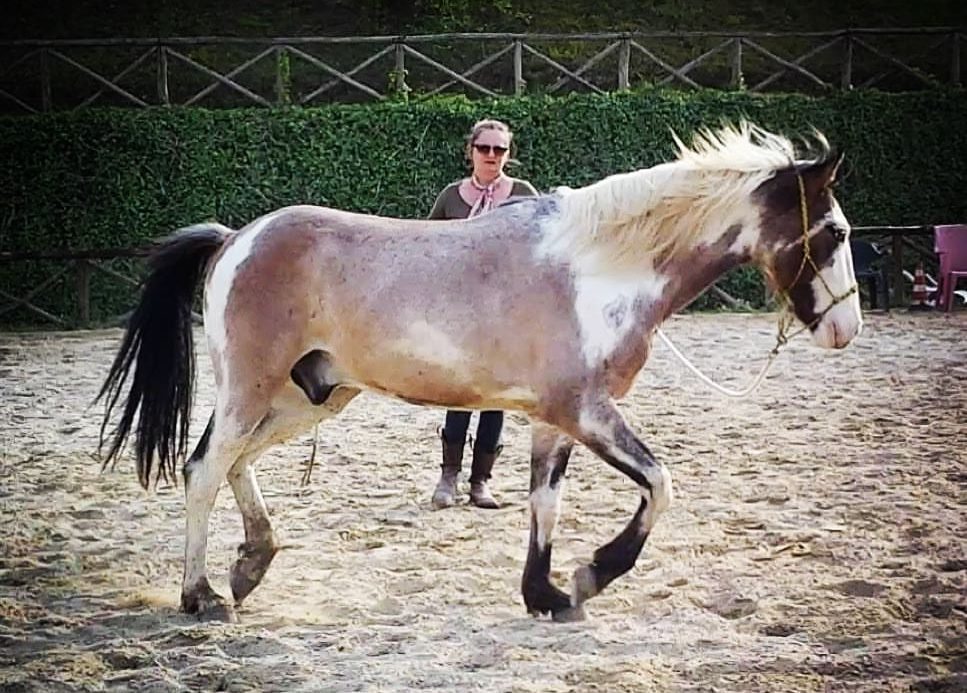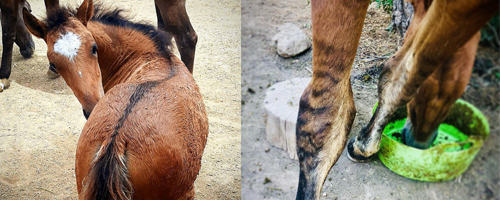The Colonial Spanish Mustang is a medium sized horse ranging from 13.1 to 15 hands (53 to 60 inches, 135 to 152 cm) with an average size of approximately 14.2 hands (58 inches, 147 cm) with proportional weight.
They are smooth muscled with short backs, rounded rumps and low set tails. Coupling is smooth and the overall appearance is of a well balanced, smoothly built horse. The girth is deep, with well laid back shoulder and fairly pronounced withers.
Conformation of the Colonial Spanish Mustangs
The Spanish Mustang Registry, founded in 1957, describes the breed standard as follows:
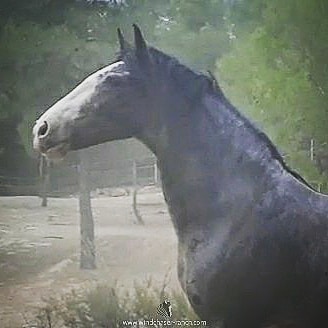
They possess the classic Spanish
type head with a straight or concave forehead and a convex nose which is in contrast to the straight forehead and nose of most breeds.
Ears are average to short and usually notched or curved towards each other. Necks are fairly well crested in mares and geldings and heavily crested in mature stallions.
Chests are narrow but deep with the front legs joining the chest in an “A” shape rather than straight across.
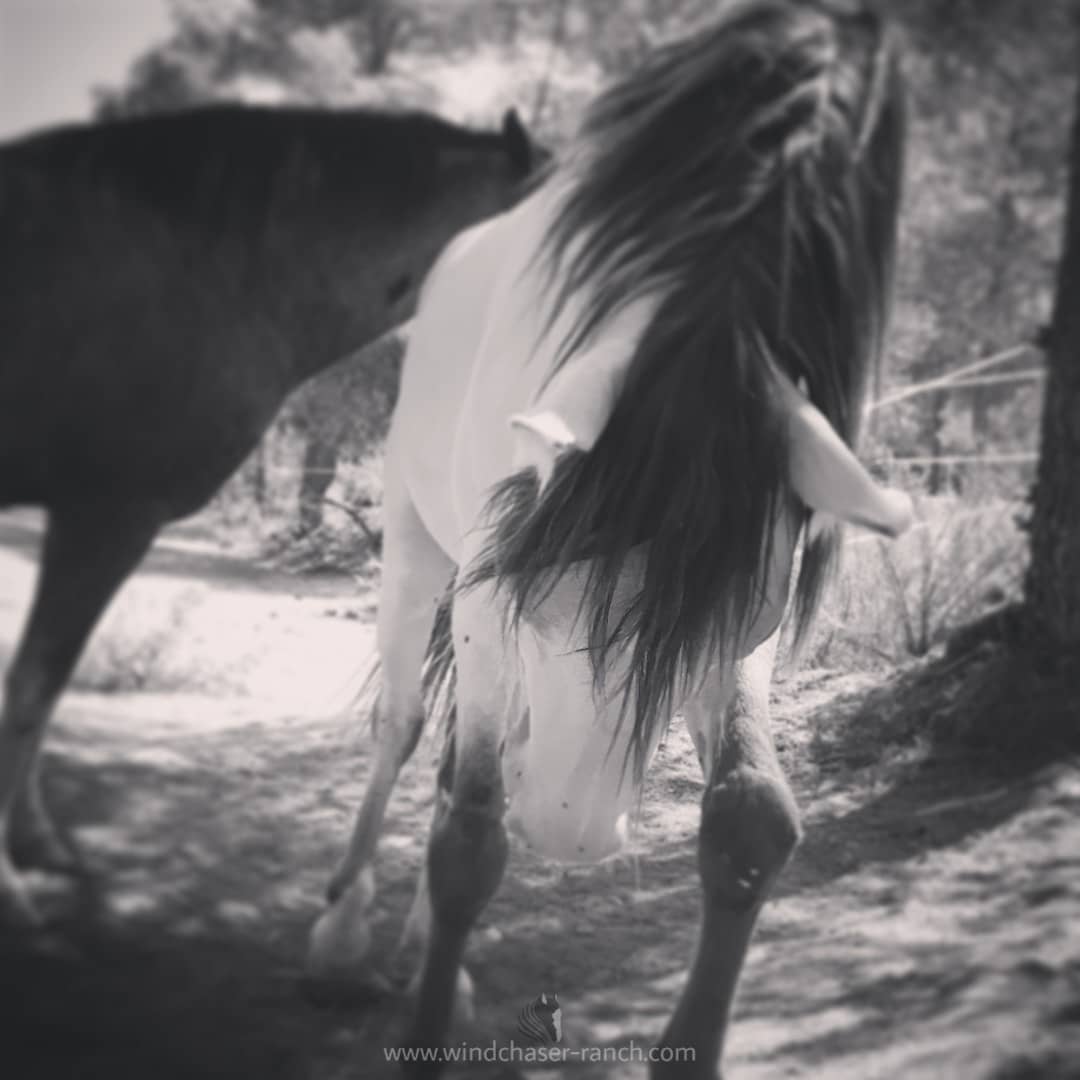
Chestnuts are small or missing
particularly on the rear legs. Ergots are small or absent.
Feet are extremely sound with thick walls, many having what is typically known as a “mule foot” which resists bruising due to the concave sole.
Cannons are short, upper foreleg is long with the canon bone having a larger circumference than other breeds of comparable size and weight.
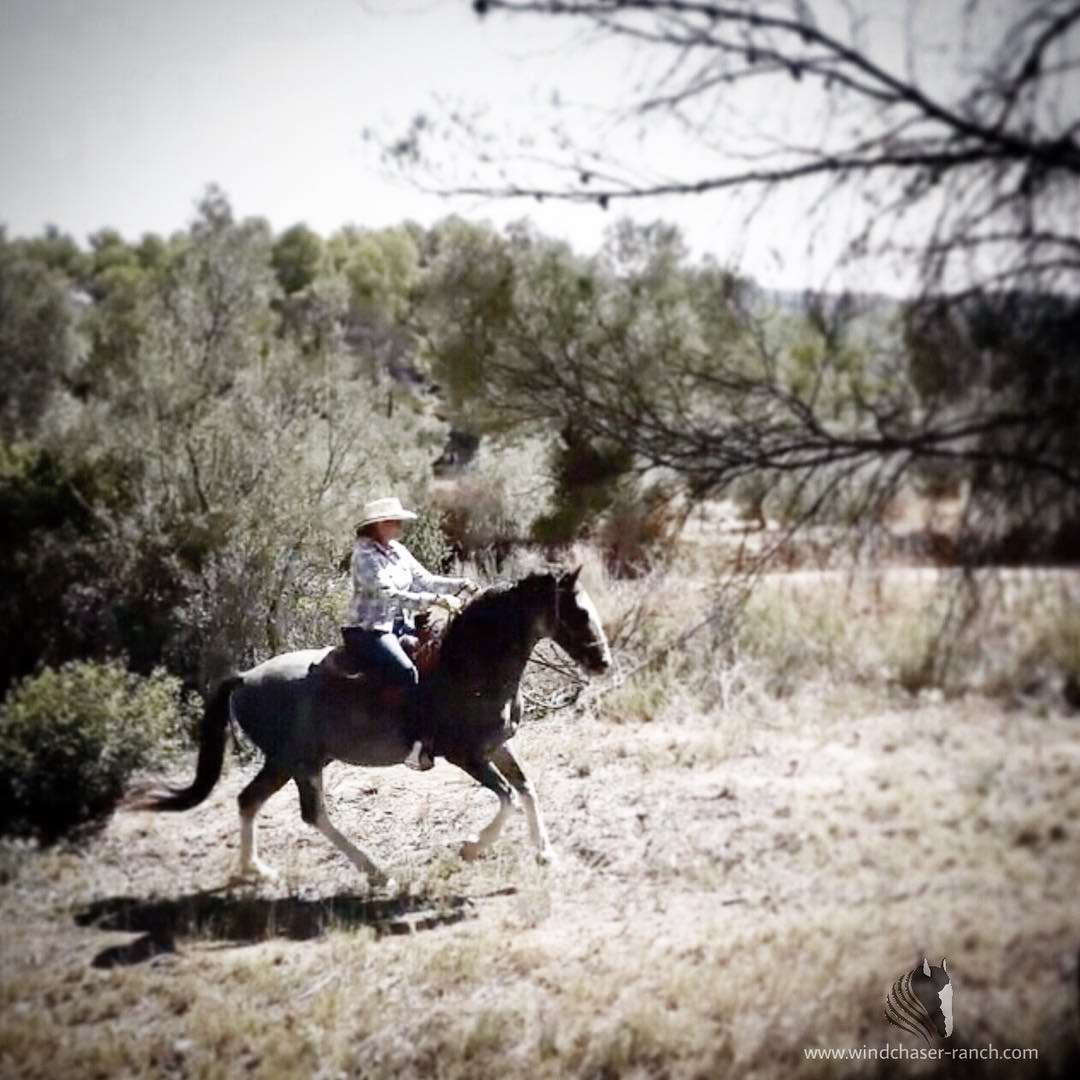
Long strided, many are gaited,
with a comfortable gait such as the amble, running walk or single foot.
Some individuals are laterally gaited and do a very credible “paso” gait though without extreme knee action.
They are remarkably hardy animals and tend to be less prone to injury, particularly of the legs and feet, than other breeds..
All colours are present in the Colonial Spanish Mustang as well as all paint patterns, including appaloosa but excluding tobiano.
You can read more about the legendary MEDICINE HAT markings here
Many horses exhibit “primitive” markings
Such as dorsal lines, shoulder barrings and “zebra” stripes on the legs.
If you are interested in learning more about the conformation of the Colonial Spanish Mustang then please get in contact.
Alternatively you can check out the documents on the breed registry website HORSE OF THE AMERICAS
Stay In Touch…
Become part of our Herd and Join our mailing list to keep up to date with all the latest news and behind the scenes activities here at Windchaser Ranch.
Be the first to know of webinars, mustang experiences and other herd happenings

